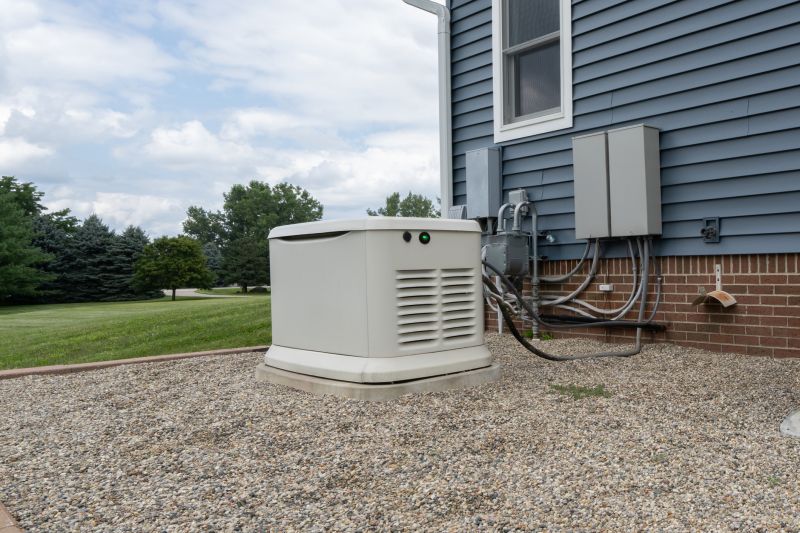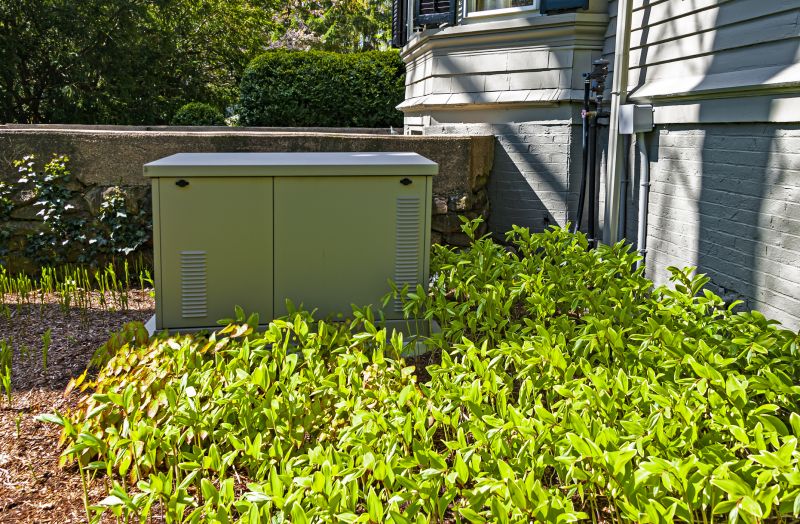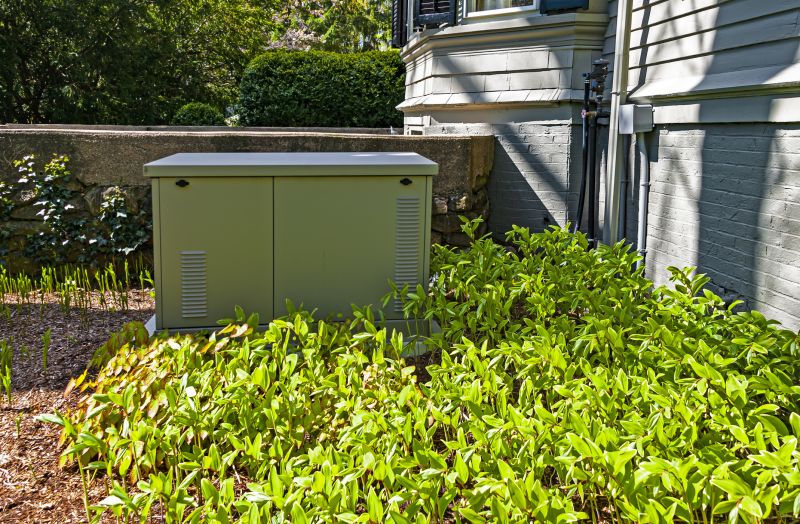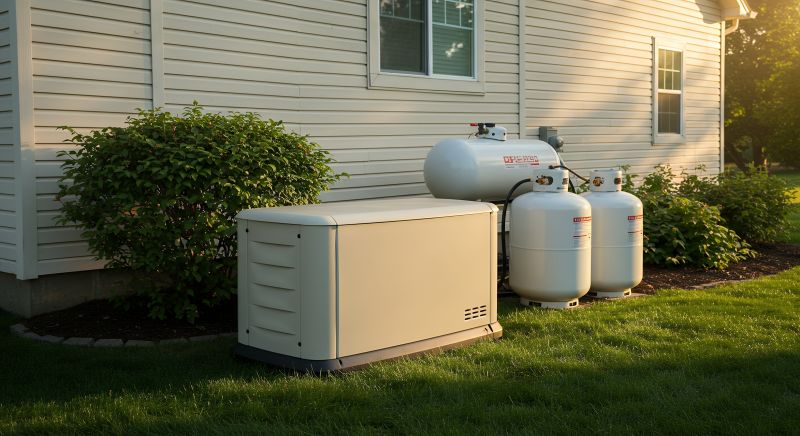Seamless Backup Generator Installation Solutions
Installing a backup generator ensures continuous power supply during outages, providing peace of mind for homeowners. Proper installation is crucial for safety, efficiency, and compliance with local regulations. A well-installed generator can operate seamlessly, minimizing downtime and protecting essential appliances and systems.

A residential backup generator provides reliable power during outages, ensuring comfort and safety for households.

Outdoor installation of backup generators requires proper placement and weather protection to ensure longevity and safety.

Backup generators supply power to essential home systems, preventing disruptions during outages.

A comprehensive backup power system integrates seamlessly with home electrical setups for uninterrupted service.
The process of installing a backup generator typically involves an initial assessment of the property, determining the appropriate generator size, and selecting the optimal location for installation. The installation process includes securing necessary permits, preparing the site, and connecting the generator to the home's electrical system. Usually, installation takes between one to three days, depending on the complexity of the setup and site conditions. Proper installation ensures safety, compliance, and optimal performance.
Having a backup generator reduces the risk of power outages affecting daily life, providing continuous electricity for essential appliances and systems.
Benefits include increased safety during outages, protection of home appliances, and peace of mind knowing power is always available.
Generator installation typically ranges from a few hours to a couple of days, depending on site requirements and system complexity.
Costs vary based on generator size, installation complexity, and additional electrical work, but investing in a backup generator can prevent costly disruptions.
Having a backup generator installed offers significant advantages, including immediate response to power failures, safeguarding critical systems, and maintaining comfort and security within the home. The installation process is designed to be efficient and minimally disruptive, with professional assessments ensuring the right generator size and placement for optimal performance.
| Aspect | Details |
|---|---|
| Average Installation Time | 1 to 3 days |
| Generator Sizes | 5 kW to 20 kW for residential use |
| Power Capacity | Supports essential appliances, heating, and cooling systems |
| Typical Costs | Varies based on size and complexity, generally between $3,000 and $10,000 |
| Maintenance Requirements | Regular testing and annual servicing |
| Placement Considerations | Outdoor location with weather protection and proper ventilation |
| Safety Features | Automatic transfer switches and overload protection |
| Regulatory Compliance | Installation must adhere to local electrical codes |
Properly installed backup generators provide reliable, immediate power during outages, helping to prevent disruptions and safeguard home systems. The investment in professional installation ensures safety, efficiency, and compliance, making it a valuable addition to any residence.

A backup generator installed in a residential yard provides dependable power during outages.

Control panels allow for easy operation and monitoring of the backup generator system.

Integrated home backup systems ensure seamless transition to generator power when needed.
Interested homeowners can easily obtain a quote for backup generator installation by filling out a quick contact form. This allows for a tailored assessment of needs and a clear understanding of the process, timeline, and costs involved. Ensuring a professional installation guarantees optimal operation and peace of mind during power outages.



